John Hurrell – 14 April, 2022
Firstly, time-based contrasts are expressed through the fast or slow transformation of the various substances that articulate the two part sculptures. This is because changing chemical properties are linked to the constructed objects so that two contrasting temporal elements are apparent. They have different speeds of transmutation; one is a container, the other solid, liquid, growing plants, or (with a glass globe) experienced as gradually changing light.
This elegantly presented Steve Carr exhibition involves sculpture, video and installation: five pieces on two floors—all thematically interconnected.
Two sorts of subject can be discerned:
Firstly, time-based contrasts are expressed through the fast or slow transformation of the various substances that articulate the two part sculptures. This is because changing chemical properties are linked to the constructed objects so that two contrasting temporal elements are apparent. They have different speeds of transmutation; one is a container, the other solid, liquid, growing plants, or (with a glass globe) experienced as gradually changing light.
On the floor in the bay, a metal basketball, deflated with a collapsed indention, holds a puddle of slowly evaporating water.
Also on the floor, close by, a matte-white plaster tyre might very gradually crumble to powder, but within its horizontal circular cavity we see changing streaks of natural light (from a skylight above) refracted and reflected in a glass ball tucked within its thin inner edges.
Downstairs in the brick-walled vault gallery, more tyres, stacked and of metal, are placed within a field of tall dry weeds. Seeding grass, thistles and flowering plants are growing inside or around the hollow treaded shells. Tyres, once symbols for movement, are now stationary in stacks or leaning.
Two sets of tyres are apparent; also two balls (solid and hollow, translucent and opaque). Growing grass needs light and water to supplement soil for nourishment. Multiple separate worlds are linked.
The second—but more indirectly alluded to—theme from this Auckland (but Ilam-lecturing) artist is the apparent ‘solidity’ of materials. Objects passing through firm surfaces that are an illusion. Molecular forces creating density through the intensity of speeding particles. Creating volume, creating mass.
Again, on the floor by the office, a ‘soft and fluffy’ marble pillow holds up an oval river rock, like an egg in a nest. A heavy grey and speckled ‘egg’ floating on foamy air.
In the video monitor on the wall, a descending balloon of water (reflections make it seem like a sequence of three aqua-filled orange bags) is directed down towards the porous filter of a laundry basket held high on a swivelling spring and counter-balanced pivot system.
That sagging burst balloon—it’s an orange ‘ball’ with a glistening silver tail—splats into the gridded basket, a wobbly bouncing lurching sieve, as ‘mercury’ streams through the matrixed sides in multiple cascades, and is recorded in slow motion. The shredded liquid becomes atomised, hundreds of tiny glass spheres in piercing light hovering in suspension.
It hints of Leonardo’s drawings of turbulent water. It’s gorgeous and is, as you’d expect from Carr, absolutely mesmerising.
John Hurrell
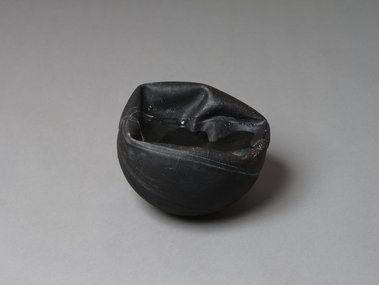
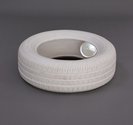


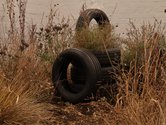


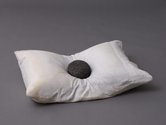


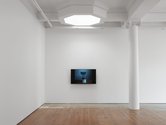
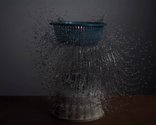
 Two Rooms presents a program of residencies and projects
Two Rooms presents a program of residencies and projects Advertising in this column
Advertising in this column



This Discussion has 0 comments.
Comment
Participate
Register to Participate.
Sign in
Sign in to an existing account.